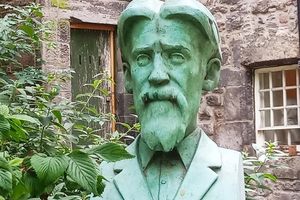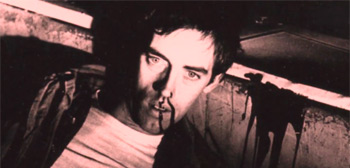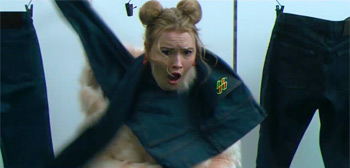Bust of Sir Patrick Geddes in Edinburgh, Scotland

On a stroll down Edinburgh’s Royal Mile/High Street, visitors can see some of the world’s first skyscrapers. That part of the capital’s Old Town was once encircled with a stone wall, which meant that the only way to increase housing capacity for a growing population was to build up. But this construction occurred at a time when there were no building codes, and little thought given to sanitation or, for that matter, the enjoyment of the inhabitants.
During the middle of the 18th century, city officials decided to create a New Town, stretching north from Nor Loch to the Firth of Forth. This was great for those who could afford to move into these stately, opulent Georgian residences. But what of the poor left in the filth and squalor of Old Town? Enter Sir Patrick Geddes (1854–1932), a man who was many things, from biologist to philosopher, in addition to becoming known as “The Father of City Planning.”
He was instrumental in envisioning and revitalizing the cramped and dingy areas that surrounded the city’s crown jewel, Edinburgh Castle. He also put his money where his mouth was, by giving up his comfortable digs on Princes Street and moving his young family into not-so-fashionable James Court. At first his efforts were small: a new coat of paint, flowers in window boxes. Eventually his deeds grew bigger, through a process called “conservative surgery” or “conurbation.” He motivated officials to demolish dilapidated buildings and create courtyards to allow air and light in.
There are many areas were his handiwork can be seen: Ramsey Gardens, to the right of the aforementioned castle, also King’s Chambers in Riddle’s Court (where his Latin motto, ” Vivendo Discimus,” “By Living We Learn,” is etched over the doorway), and Dunbar’s Close.
And in a sequestered garden, just down from the Canongate Kirk, a happy wanderer will encounter an open space filled with trees and flowers of all descriptions—with a patina-covered bust of the honorable man himself, created by Kenny Hunter. Upon closer inspection, the observer will also notice that the pedestal is reminiscent of bee hive. It was unveiled in 1996 by his great granddaughter, Gloria Geddes. It is hoped that the sculpture and setting will encourage a sense of community.





